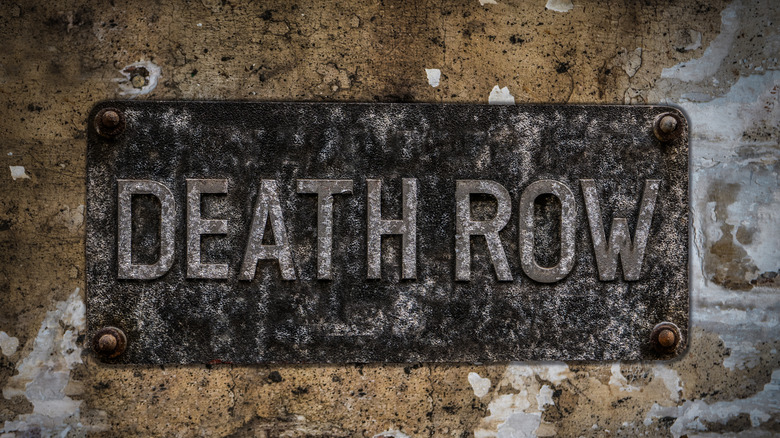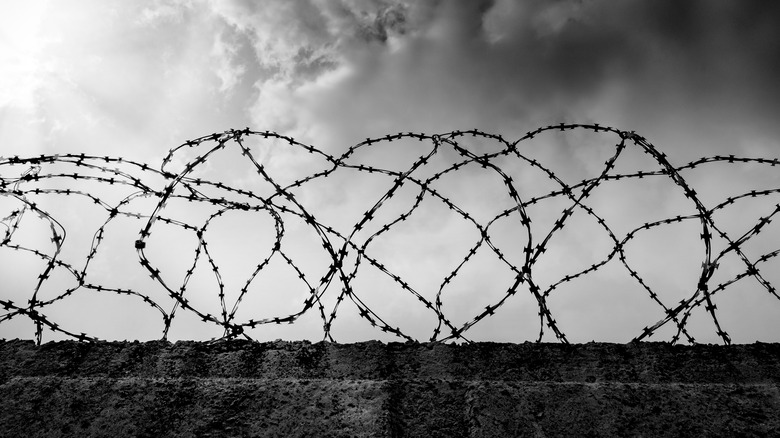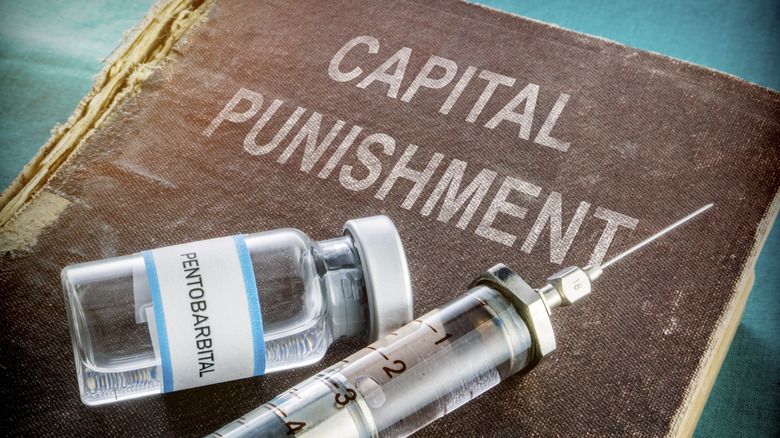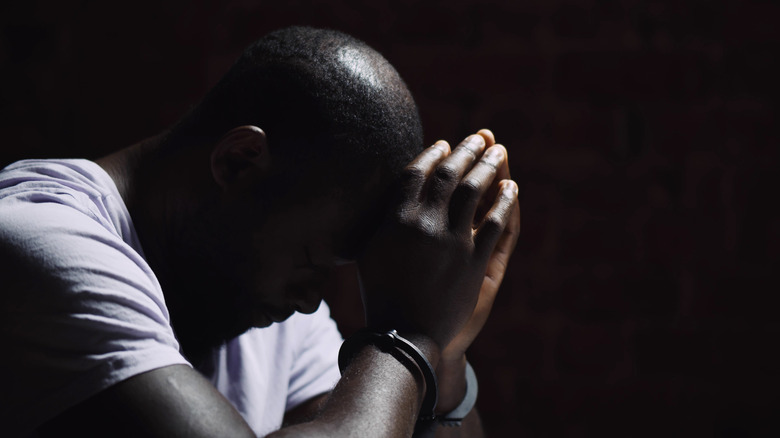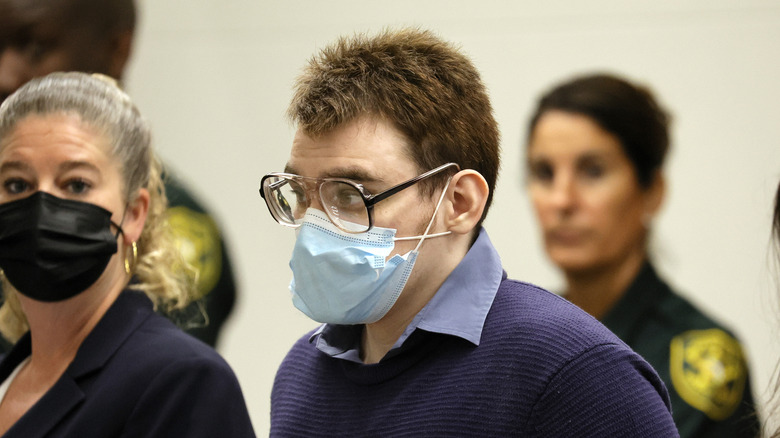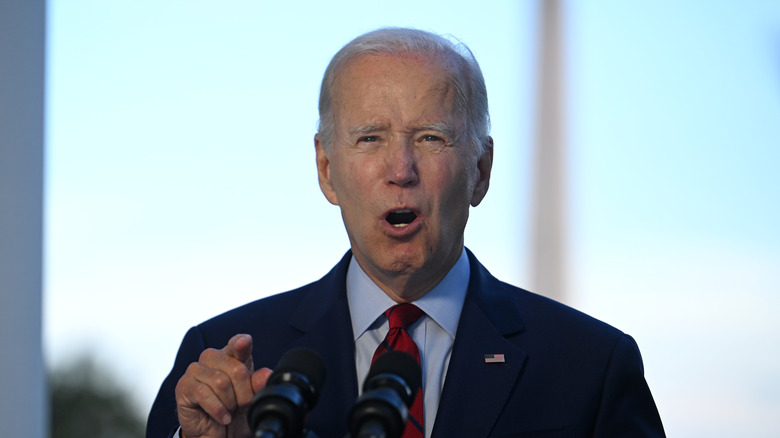Disturbing Details Found In The Death Penalty's Racial Statistics
When colonialists crossed the Atlantic Ocean and landed in North America, they brought with them disease, weapons, and farming practices. But one of the other messed up things that happened during colonial times was the contentious practice of the death penalty. Also known as capital punishment — with the word "capital" stemming from the Latin word for head — the death penalty has been used in the American colonies since 1630, according to the Constitutional Rights Foundation.
The majority of the world's countries have abolished the death penalty, but the U.S. "remains the only Western nation to allow capital punishment," according to BBC News. Starting in the 1950s, public protests broke out over the practice, and it has remained controversial ever since, per the Constitutional Rights Foundation. According to the Equal Justice Initiative, the practice is "a flawed, expensive policy, defined by bias and error" that "targets the most vulnerable people in our society," including racial minorities.
A flawed criminal justice system
There are many dark secrets of the U.S. prison system, but one that is obvious for all to see is that there are stark racial disparities in who is imprisoned within the prison system. Despite making up about 13 percent of the U.S. population, 22 percent of people killed by police and 47 percent of people wrongfully convicted of crimes are Black, according to the American Bar Association. In general, Black people are sent to prison five times as often as white people and also face disproportionately harsh sentences for the crimes they commit, per the American Bar Association.
According to the Sentencing Project, these disparities stem from the War on Drugs of the 1970s, when former president Richard Nixon passed policies like "Broken Windows" and "Stop, Question, and Frisk." The result was a selective targeting of racial minorities for drug offenses that put them in prison at higher rates.
But these disparities can also be attributed to policies that disproportionately target people living in poverty. Per the Sentencing Project, the U.S. "in effect operates two distinct criminal justice systems: one for wealthy people and another for poor people and people of color."
Race and the death penalty
Certain crimes merit the death penalty in the United States, but there are disparities by race among people who commit these crimes when it comes to who is actually sent to the death row executioner. For example, despite making up about 13 percent of the U.S. population, Black people comprise 41 percent of the death row population according to the Death Penalty Information Center. In comparison, 42 percent of people on death row are white, whereas white people make up close to 62 percent of the population (via the Death Penalty Information Center).
Black people are also more likely to be sentenced to the death penalty if the victim of the crime is white, per BBC News. According to information compiled by the Death Penalty Information Center, more than 75 percent of victims in murder cases that end up with the alleged perpetrator executed have been white.
'Descendent of lynching'
According to the Equal Justice Initiative, these racial disparities in capital punishment show the practice is a "direct descendant of lynching." Per the Equal Justice Initiative, lynchings "gave way to executions in response to criticism that torturing and killing Black people for cheering audiences was undermining America's image and moral authority on the world stage."
But still, the killing of Black people continued within the criminal justice system. By 1915, "court-ordered executions outpaced lynchings for the first time," with two-thirds of people executed in the 1930s being Black, according to the Equal Justice Initiative. By 1950, 75 percent of people executed in the South were Black, despite Black people representing 22 percent of the Southern population. One fictional example of this trend was seen in Harper Lee's classic novel, To Kill a Mockingbird, in which an innocent Black man is sentenced to death by an Alabama jury.
A current test of the system
As the gunman who killed 17 people in the Parkland mass shooting four years ago undergoes his trial, the question of whether he will be put to death through capital punishment has arisen, per BBC News. In the U.S., 30 states have the death penalty, "but executions occur mostly in Southern states," according to AP News. The white gunman, Nikolas Cruz, pleaded guilty to the murders in October, but the jury is still out on whether he will be sentenced to capital punishment, which is most commonly performed through lethal injection, per BBC News. Here's what a Florida jury must do in order to recommend the death penalty for Cruz: vote unanimously on a sentence for each of his victims (via BBC News).
In the case of Payton Gendron, who was accused of killing 10 Black people in Buffalo, New York, in May, the use of the death penalty is also being considered. According to the Los Angeles Times, New York is one of the states that has a statute against the death penalty, but Gendron is being parallel-trialed in federal court, where executions can occur. As a result, a state judge asked the federal legal system — which has made moves to slow the rate of death row execution — whether it will choose to execute Gendron (per the Los Angeles Times).
Potential solutions
According to the Sentencing Project, believing "the current system is unaffected by centuries of an explicitly racist past is wishful thinking." Instead of ignoring obvious and harmful remnants of historical racism, there are actionable things to be done to reduce racial bias in the criminal justice system. Per the Sentencing Project, that could start by ending the War on Drugs and reducing low-level drug offense punishments; reducing the use of cash bail; and implementing training practices for employees of the criminal justice system to reduce racial bias.
The Supreme Court actually struck down capital punishment in 1972, but legislators wrote new death penalty laws that have since been implemented, according to the Equal Justice Initiative. Although capital punishment has slowed in recent years, with about 50 prisoners killed each year and an average of 14 years between a sentencing and an execution, some advocate for the complete removal of the policy from U.S. legislature, per the Constitutional Rights Foundation.
